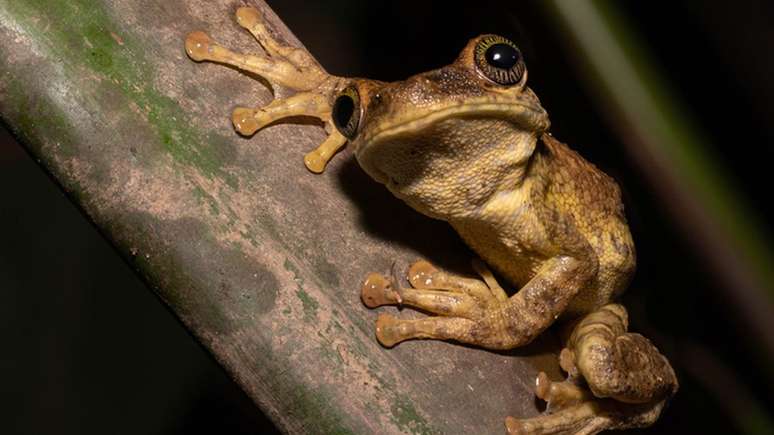Since 2005, Brazil has overtaken the USA and become the leader in the ranking of scientific studies on the largest tropical forest in the world. The growth of China, on its way to entering the top 3, also attracts attention.
Being the largest tropical forest on the planet, the Amazon arouses the interest of several countries: proof of this is the diversity of research on it published in recent decades in different parts of the world.
Between 1975 and 2005, the United States was the main source of studies on this biome.
Since 2006, however, Brazil has taken the lead in this ranking and today it is the main reference in scientific research in the Amazon.
That’s one of the findings of a survey conducted by physicist Carlos Henrique de Brito Cruz, senior vice president of Research Networks at Elsevier, a science publisher that publishes several academic journals, including The Lancet.
Brito Cruz is also professor emeritus at Campinas State University (Unicamp) and scientific director of the Research Foundation of São Paulo (FAPESP) for 15 years.
The survey, which analyzed a database of millions of scientific articles published worldwide, also revealed that, with the exception of Brazil, other South American countries that also host parts of the Amazon in their territories publish relatively less on the subject.
To get an idea, in 2022 Peru appears in seventh position in the ranking, behind Brazil, the United States, the United Kingdom, China, Germany and France. Followed by Australia, Colombia and Canada.
In the chart below, you can see the four countries that have produced the most scientific papers on the Amazon — and also how China is moving towards third place on the list, after overtaking Germany and catching up with the UK:
But where do these polls come from? What are the institutions that produce the most research on the Amazon?
The survey conducted by Brito Cruz reveals that Brazilian universities and study centers are the vast majority, if we analyze the publications made between 2012 and 2021.
Of the 20 most active institutions in this tropical forest, 16 are in Brazil. The four exceptions are the National Center for Scientific Research (CNRS), from France, which ranks seventh, the Chinese Academy of Sciences (13th), the Smithsonian Tropical Research Institute, from the United States (17th) , and the University of Florida (20th), also in the United States.
Of the 16 Brazilian institutions that appear on the list, six are actually located in the Amazon: the Federal University of Pará (UFPA, 2nd place), the National Research Institute in the Amazon (INPA, 3rd), the University Federal University of the Amazon (Ufam , 4th), the Museu Paraense Emílio Goeldi (MPEG, 9th), the Federal Rural University of the Amazon (Ufram, 18th) and the Federal University of Mato Grosso (UFMT, 19th ).
The leader of this ranking is the University of São Paulo (USP) — the State University of São Paulo (Unesp), the Federal University of Rio de Janeiro (UFRJ), the Brazilian Society of Agricultural Research (Embrapa) and Unicamp also appear in the top 10 chart:
And, of course, carrying out these studies has a cost, which includes, among others, grants, input and equipment for researchers. But who pays that bill?
Once again the leading role goes to the Brazilian science promotion agencies.
Of the top ten funders of research in the Amazon between 2012 and 2021, six are national entities.
In first and second place are the National Council for Scientific and Technological Development (CNPq) and the Coordination for the Improvement of Higher Education Personnel (CAPES), linked to the Federal Government.
State agencies also bear part of the costs, with particular attention to research support foundations in São Paulo (Fapesp, 4th place), Amazonas (Fapeam, 5th) and Rio de Janeiro (Faperj, 10th). Inpa occupies the eighth position in the standings.
Among the foreign institutions that sponsor part of the studies, the highlights go to the National Science Foundation (NSF, 3rd) of the United States, the Research Council for the Environment (NERC, 6th) of the United Kingdom, the National Science Foundation Natural from China (NSFC, 7th) and by the National Aeronautics and Space Administration, NASA (9th), also from the USA.
And with which countries does Brazil have the most international collaborations for research in the Amazon? The podium is with the United States, the United Kingdom and France.
Brito Cruz draws attention to the few existing connections with other countries that also host parts of this biome.
Colombia and Peru appear only in seventh and eighth position, respectively. Ecuador is only 17th in this ranking, just behind Switzerland, Italy and Sweden.
See below the top 10 collaborations between Brazil and other nations:
To complete the analysis, Brito Cruz also investigated which disciplines and specialties generate the most studies in this specific biome.
Life Sciences and Agriculture have a large leadership advantage, with nearly three times as many papers published as second place (Environmental Sciences).
Earth and Planetary Sciences, Medicine and Social Sciences round out the top 5, as you can see in the graph below.
Among the ten areas of knowledge that most generate academic investigations in the Amazon, there are also Biochemistry, Genetics and Molecular Biology; Immunology and Microbiology; Veterinarian; Art and humanity; in addition to multidisciplinary work.
Source: Terra
Rose James is a Gossipify movie and series reviewer known for her in-depth analysis and unique perspective on the latest releases. With a background in film studies, she provides engaging and informative reviews, and keeps readers up to date with industry trends and emerging talents.








